Vincent Black Shadow. Legend, faded photograph, dog-eared book, campfire ghost story, popular song. A dark castle formidable with reputation, built up over the decades as owners, and those who aspired to own, called her ‘widow maker’…‘the world’s fastest standard motorcycle’… ‘pure hell on the straightaway’…’snarling beast’.
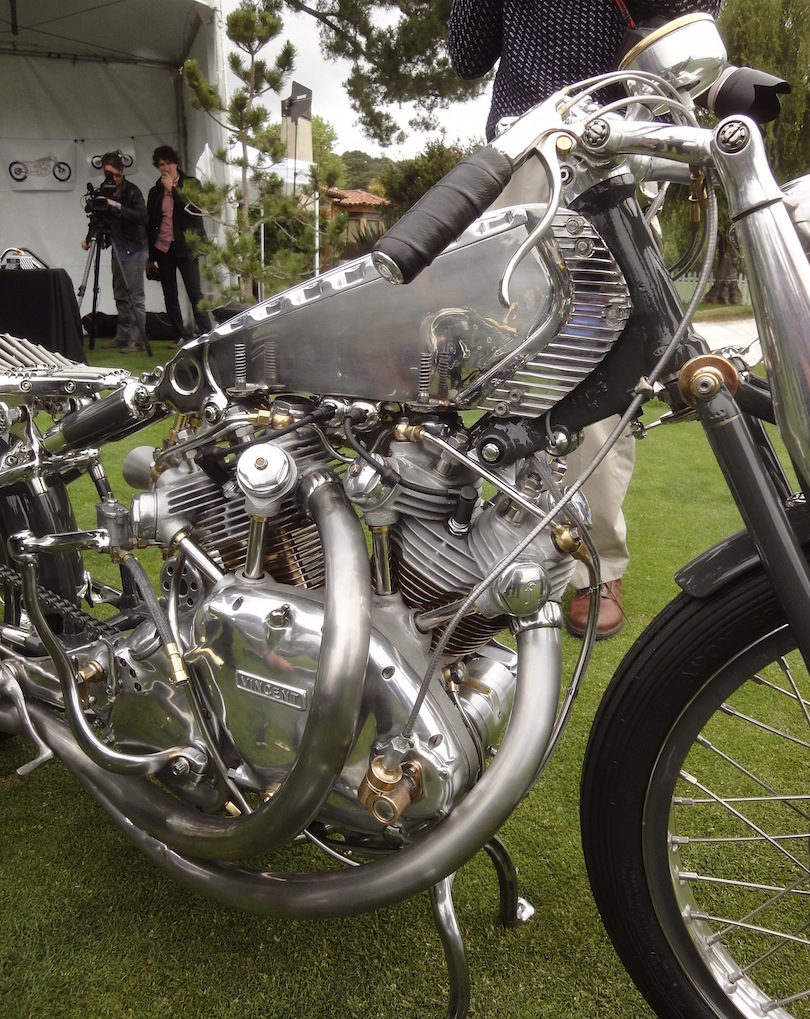
To approach a Vincent Black Shadow, intent to improve it, while standing in the spotlight of peer and media scrutiny, is an act of folly, egotism, or sheer screw-you audacity; examples of each have Been Done in the Custom world. You may celebrate or denigrate these altered Vincents, but they exist as a confirmation of the Black Shadow’s stature in the motorcycle Pantheon. Something which had Not Yet been done, though, is wrestling with the ghosts inside the Shadow (‘the Phils’ Irving and Vincent), embracing them with one’s thoughts, hands, and tools, finding new solutions to their old problems, re-thinking the whole motorcycle, re-solving their original questions. Rare humans have strength of character, and lack of ego, to work with the legendary deceased as trusted advisers, but Ian Barry, for example, is such a man.
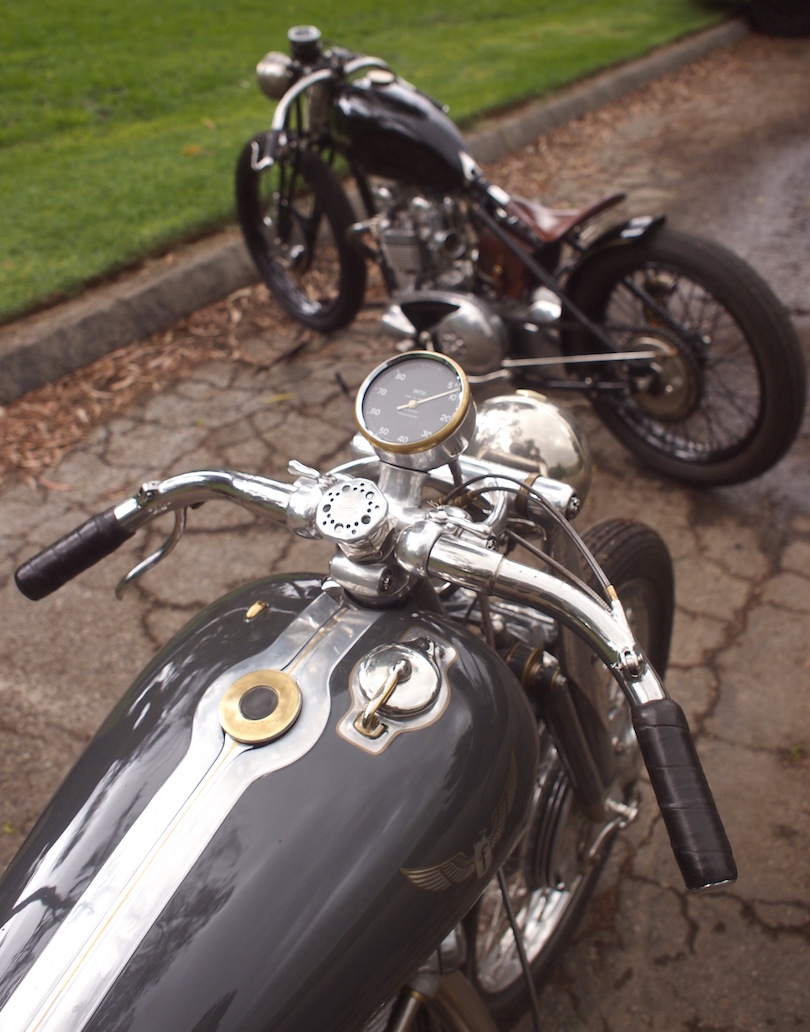
That the Black is both a Falcon and a Vincent simultaneously, is testament to this collaboration’s success. The Australian engineer Phil Irving, the v-twin’s mechanical designer, was notorious for quirky ‘solutions to problems nobody asked’, creating rider adjustability – without tools – for brakes, chain tension, riding position, even gearing. Barry has taken Irving at his word, examined these ‘conveniences’, and made them more elegant, more beautiful, and in fact, more functional. The front and rear wheels, seat covers, and even the petrol tanks can be removed with no tools at all, while the handlebar and footrests position, chain tension and brake adjustment are all easily fine-tuned by hand, very much in the spirit of the original Vincent, but better.
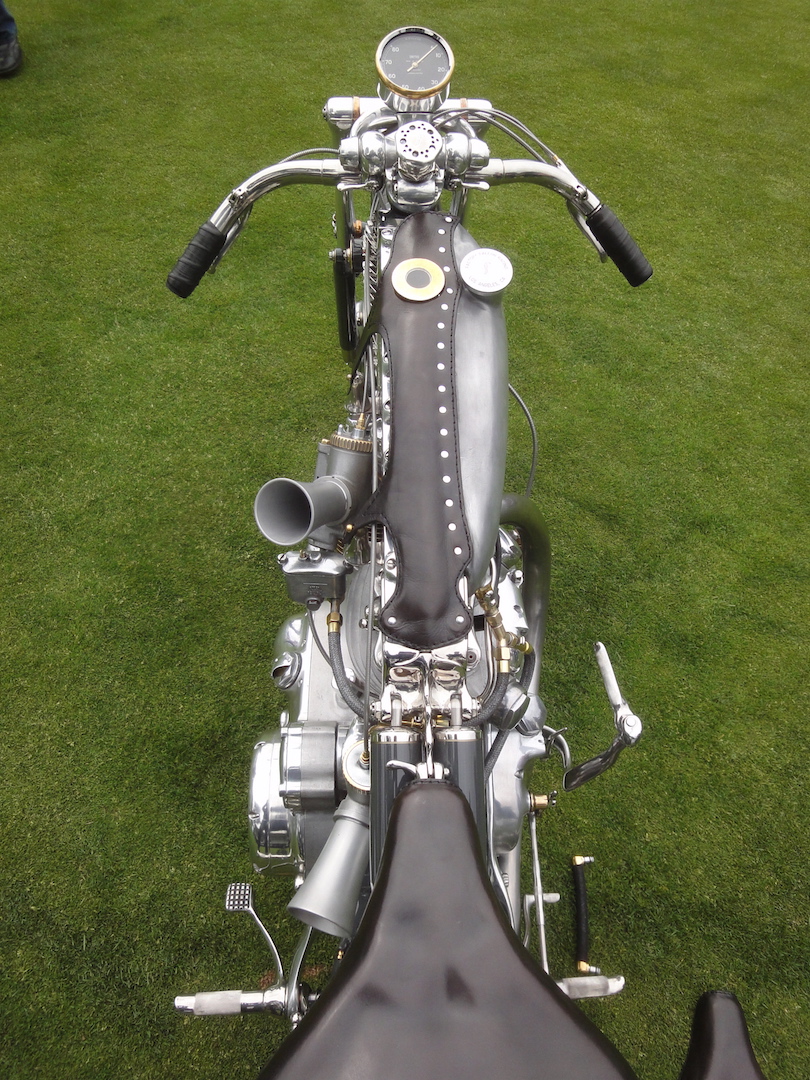
Phil Vincent was an uncompromising visionary, who acquired the ‘HRD’ motorcycle name from bankrupt TT-star Howard R. Davies in 1928, hoping an existing brand name would give a head-start to his advanced ideas on chassis design. The early HRD-Vincents used stiffened, strutted frames for good handling, plus a distinctive triangulated swinging-arm suspension which Mr. Vincent patented in ‘28, which looks like a modern ‘monoshock’, but in fact originally used a pair of springs with friction dampers for shock absorption. These early, awkward-looking HRD-Vincents were single-cylinder machines, but by 1936, with Phil Irving’s help, a 1,000cc v-twin engine was created, the inspiration legendarily arriving when two tracings of the single-cylinder engine were overlapped. The Series ‘A’ Rapide had arrived, and it was the fastest production motorcycle in the world, capable of 185kph.
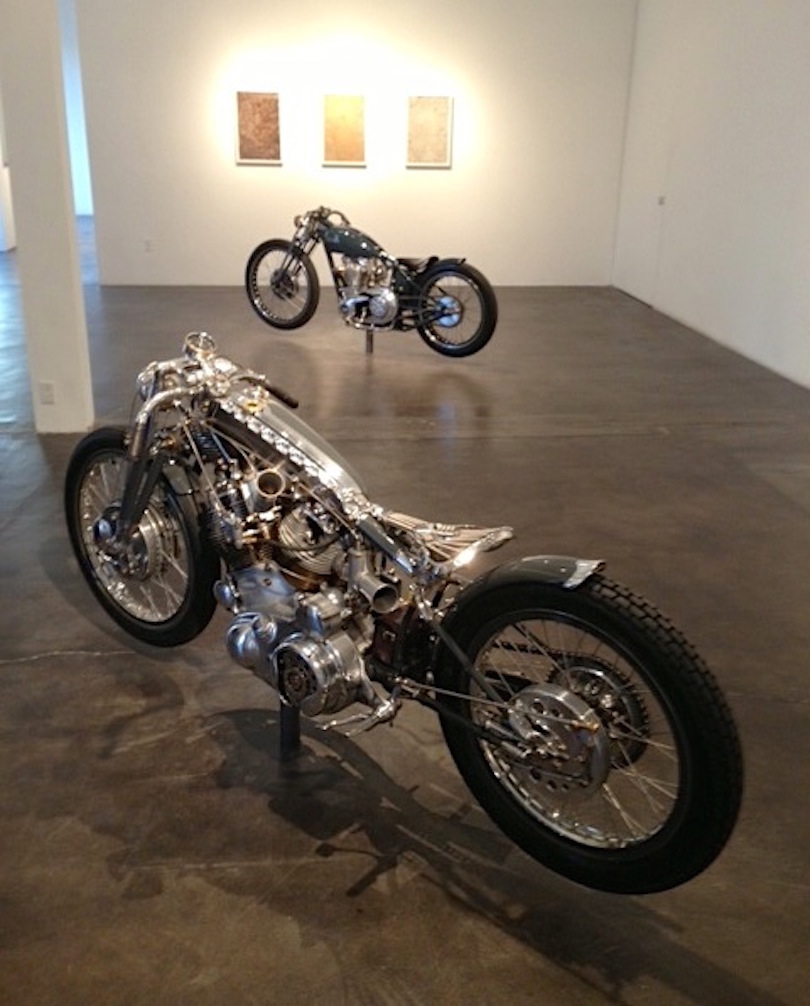
During off-hours in WW2, ‘the Phils’ discussed and drew up plans for a much-improved v-twin, which débuted in 1946 as the ‘Series B’ Rapide. Eliminating the unnecessary weight of a tube frame, the ‘B’ used the new unit-construction aluminum engine as a stressed element between Brampton girder forks, and that distinctive triangular swingarm, which now used hydraulic shock absorbers. The new Rapide was faster, more robust, and a much cleaner design than the pre-war ‘A’, giving 190kph performance, if you had a good one. As the Vincent factory was not destroyed by German bombs in WW2, the machine tools which built the new Rapide were old and worn, giving rise to inaccuracy in machined parts, so laborious hand-assembly was required to bring out the best in the engine. When the new ‘Black Shadow’ super-sports model was announced in 1948, the 200+kph top speed was created less by ‘hot’ new parts, than the careful selection of the timing and valve gear, properly-machined castings, and ‘blueprinted’ assembly. In truth, ‘good’ Rapides could be every bit as fast as Shadows, but lacked that magic name and sexy all-black paint finish. Still, the series ‘C’ Black Shadow, now with radical aluminum ‘Girdraulic’ front forks, retained the ‘fastest in the world’ title for Vincents, reaching a peak with Rollie Free’s immortal ‘bathing suit’ run at the Bonneville Salt Flats on a Shadow at just over 150mph.
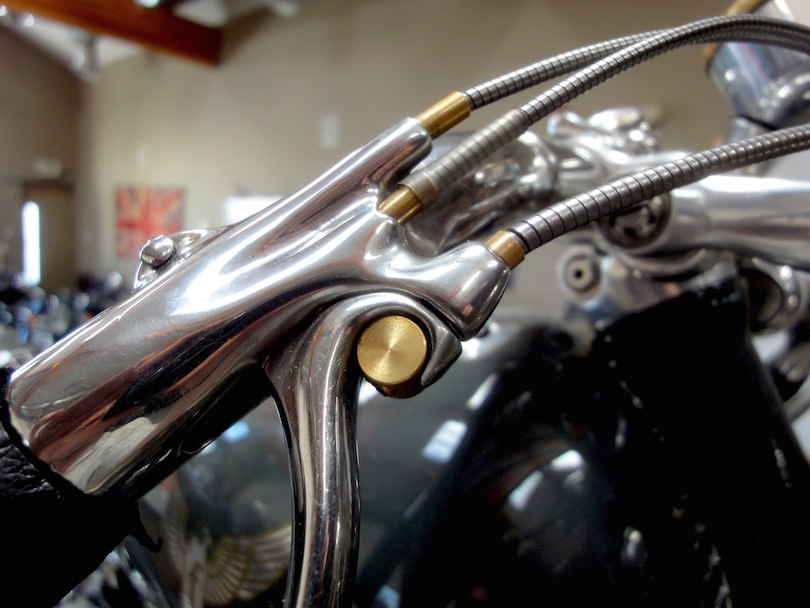
Thus the legend of the Black Shadow was created, and continued to grow long after the Vincent factory stopped producing motorcycles in 1955. The image of Rollie Free stretched out and nearly naked at 150mph, the Hunter S. Thompson articles and books making crazy claims for lethal Vincent performance, and Richard Thompson’s song ‘1952 Vincent Black Lightning’, piled rumor onto story onto myth.
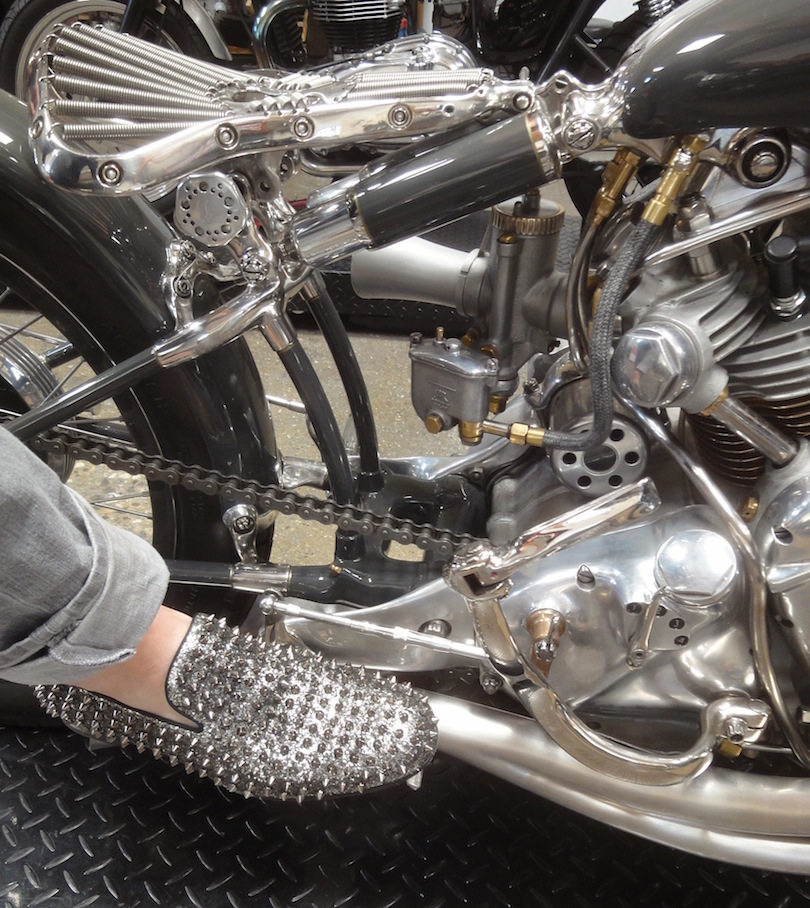
After all that hype, the Vincent in the final analysis is just a motorcycle, but a damned good one for its day. But of course, 1940s technology leaves plenty of room for improvement, and the Vincent twins have always attracted Real Riders, who modify their machines as they see fit for touring, racing, or posing. But nobody has modified a Vincent Black Shadow quite like Falcon.
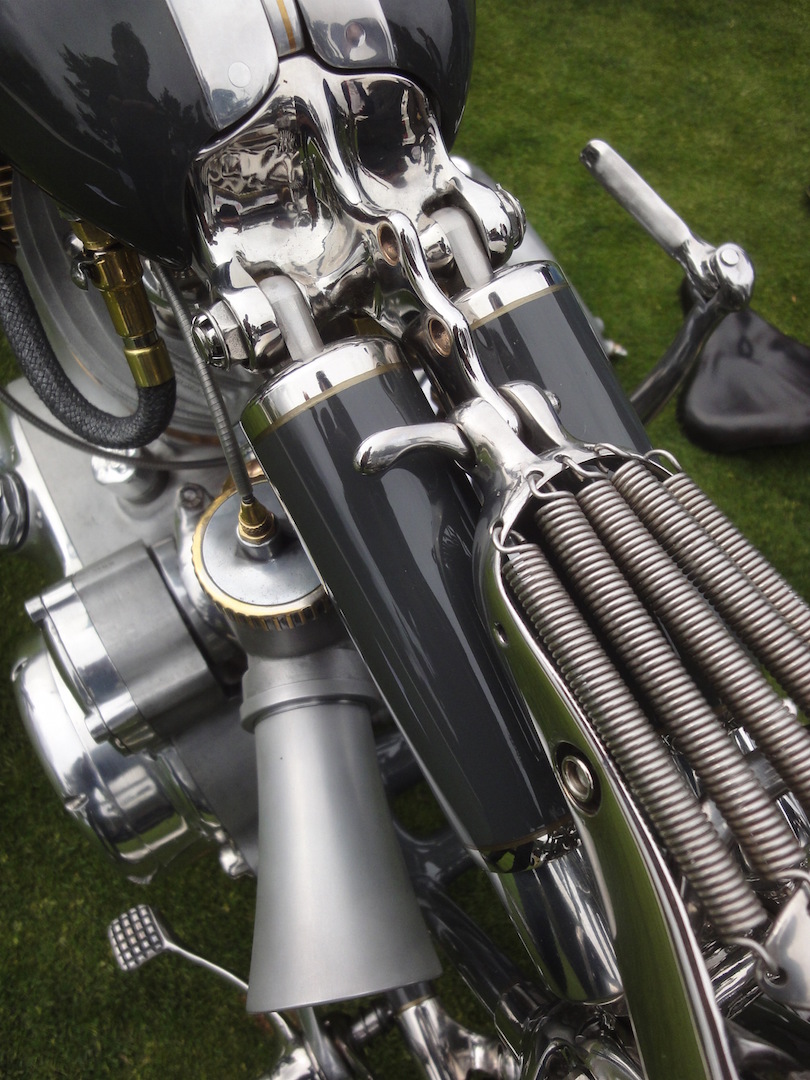
The list of work done on the Black is staggering, but to sum up, the chassis was completely fabricated by Falcon, barring a single humble lug, at their LA warehouse; frame, forks, brakes, tanks, handlebars, controls, seat, mudguards. Their silhouette is familiar as Vincent, clearly a family member, but everything is changed. The forks are brand new and modernized, yet still Girdraulics; the blades completely redesigned with weight carved away, all bearings changed to needle-rollers for free movement, and the shocks are modern gas units, made bespoke by Works Performance to Falcon spec. The front brakes have 4 leading shoes, their backplates rigid against the forks, with twin drums spoked shorter/stiffer than the originals, with double the braking power, and lighter to boot.
Phil Vincent’s triangulated rear end has been lengthened with a more robust pivot area, and the suspension modernized with another pair of Works gas shocks. The seat, perhaps the least satisfactory element on a Vincent, is replaced by a small saddle, very light, cleverly constructed, and far racier than the ‘King and Queen’ before. The structure of the saddle, with the leather cover removed (another by-hand job, to swap ‘touring’ or ‘racing’ covers), is a fascinating and unique design by itself, and on any other machine it would shout. Peer under that seat at its mount, and say hello to a beautiful sculpture, put to new employment.
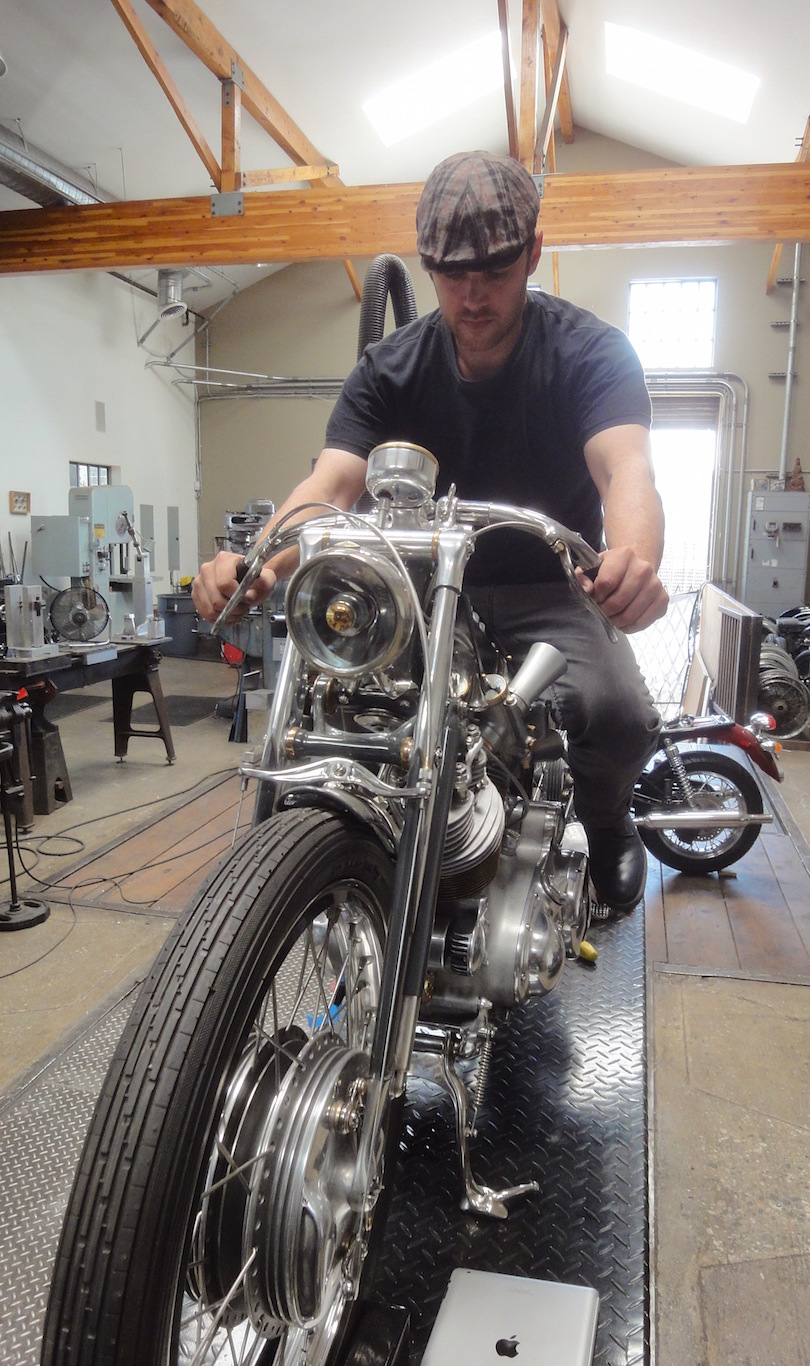
The oil talk, being half the frame of a Vincent, was fabricated entirely of stainless steel; now cooling fins act in symbiosis with pannier fuel tanks, whose hollows guide onrushing air towards the cylinder heads and bronze-alloy barrels. Those hand-formed aluminum tanks press-and-click onto damned clever spring-loaded pins, vibration-damped by rubber o-rings. With push-fit marine fuel taps, the entire system is removable in under 30 seconds, with no tools, if one needs to switch from ‘touring’ to ‘sprint’ mode, using the single small pannier tank with leather straps.
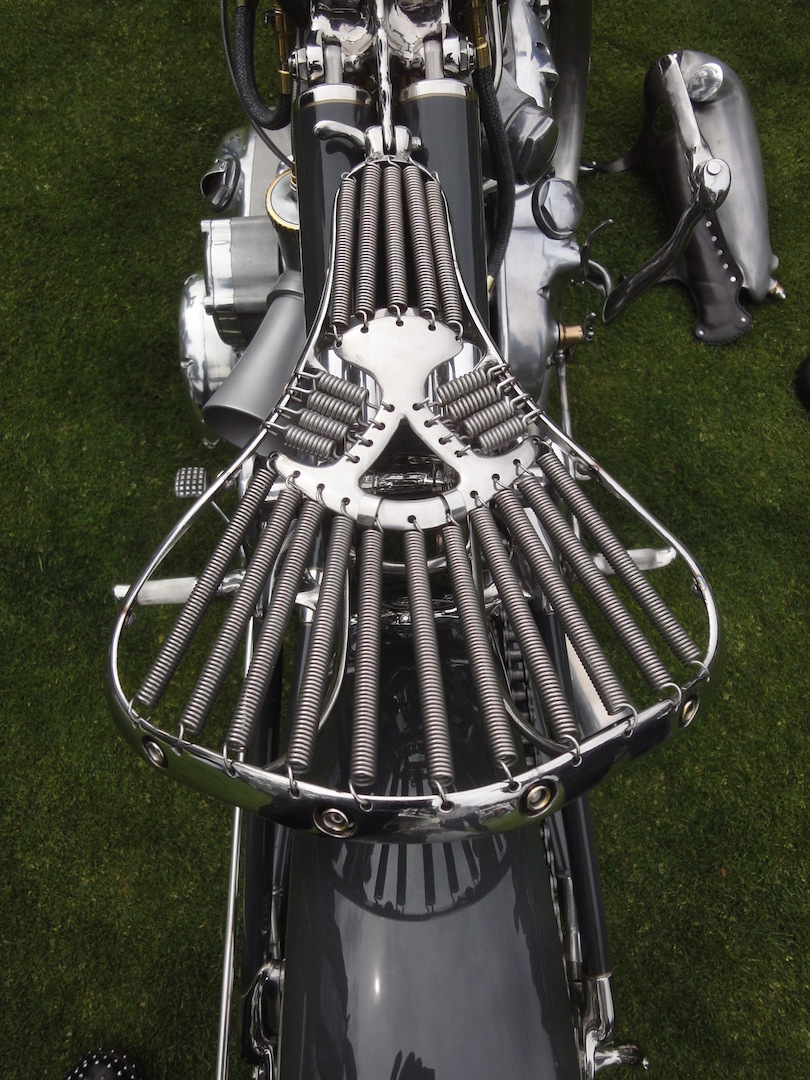
While the Amal GP racing carburetors thrust dramatically outwards at odd angles, this was standard Vincent dry-lakes racing and sprinting practice in the 1960s, which is the legacy of this particular Black Shadow, which lay in boxes for nearly 30 years in San Francisco. The radical air intake blows back out through a gracefully curved 2-into-1 exhaust system; the carbs and pipes are the most visually extravagant features of the Black, as the whole machine is characterized by remarkable restraint. There are no fancy flourishes or flashy paint jobs, no engine-turned decoration, no engraved scrollwork, no gemstones or precious metals.
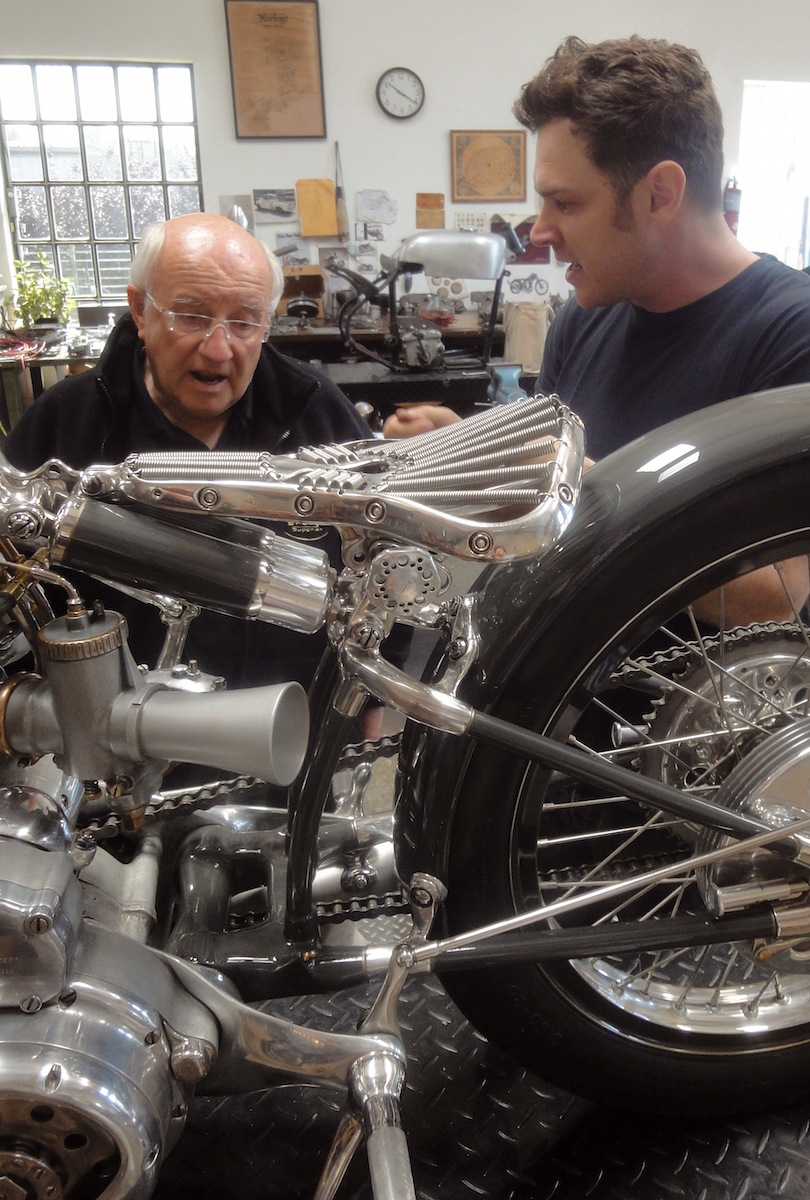
The staggering volume of Time invested to create the Black – 7 highly skilled artisans spent an entire year of their lives building it – was not spent ‘decorating’ a custom Vincent. The time was spent creating new engineering solutions to the same set of problems faced by ‘the Phils’ when originally designing the Black Shadow, and once these new solutions were devised, each part was crafted in metal as an object of striking beauty in itself. That Falcon’s parts are superior in their function to the original Vincent parts is outrageous, a slap in the face of History, and generates questions not typically raised in the world of Customs, where Form generally follows Fashion. Questions like, ‘when is a design finished?’ and ‘can an iconic motorcycle be a conversation over time?’ and ‘just who does Ian Barry think he is?’
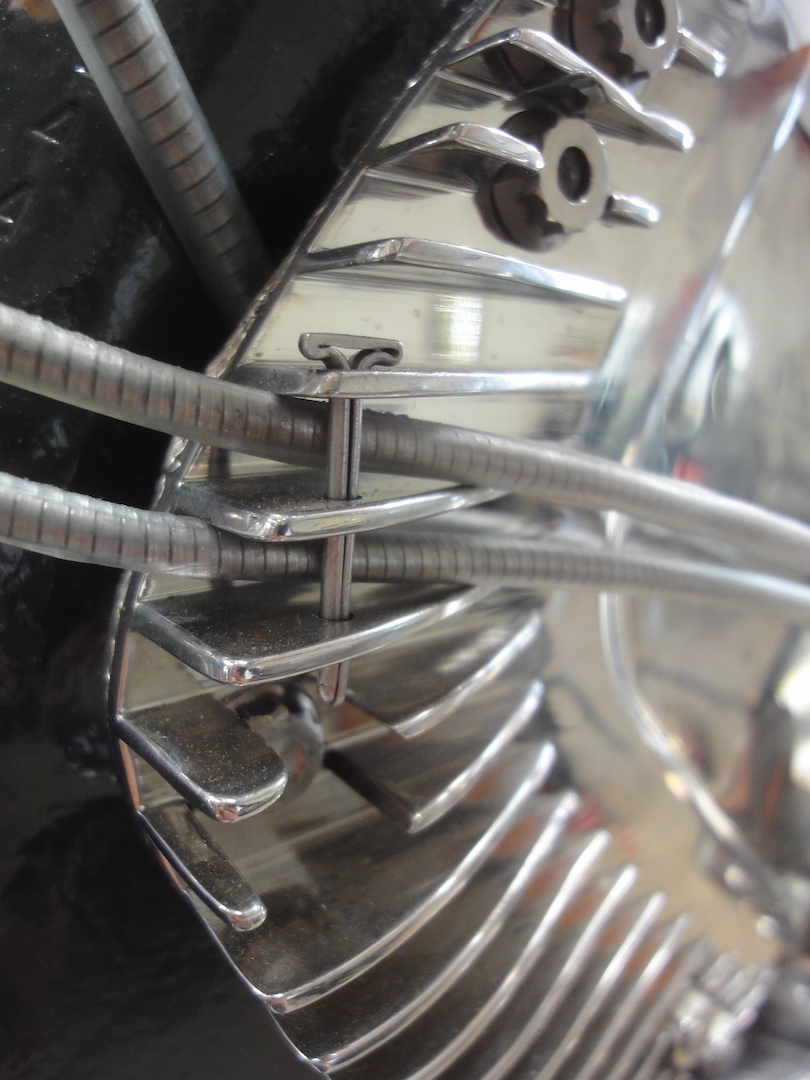
This is the Falcon signature -Ian Barry’s metal handwriting – the sheer sculptural beauty of the motorcycle and its parts, combined with extremely functional modifications. In this, Barry and the Falcon team are in very rare company, and their work is pushing the boundaries between motorcycles, fine art, and jewelry. The Black is #3 of Falcon’s projected ‘Concept 10’, and exhibits the definitive stroke of a young designer gaining confidence and technical prowess, unafraid within the swaggering world of Motorcyclists to shape footrest hangars, tommy bars, air scoops, and even frame lugs in the most gorgeous, bone-like, and organic forms, shapes impossible to machine, proud evidence of their hand-made creation. Cast them in silver and sell them to fashion houses, the bits are drop-dead gorgeous. Bolt them together, and we have an Olympiad with the figure of Jessica Rabbit. Some lucky bastard actually owns this motorcycle…but he can’t stop us filling our eyeballs.
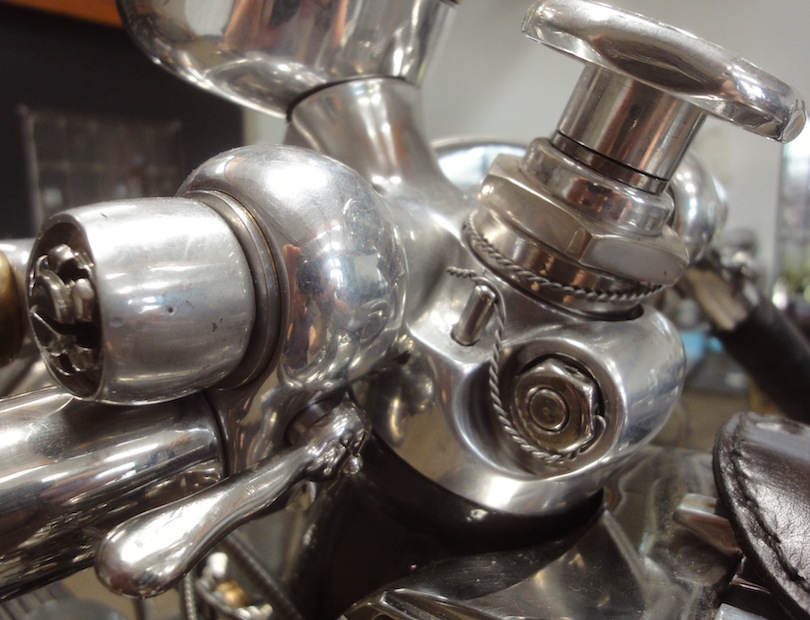
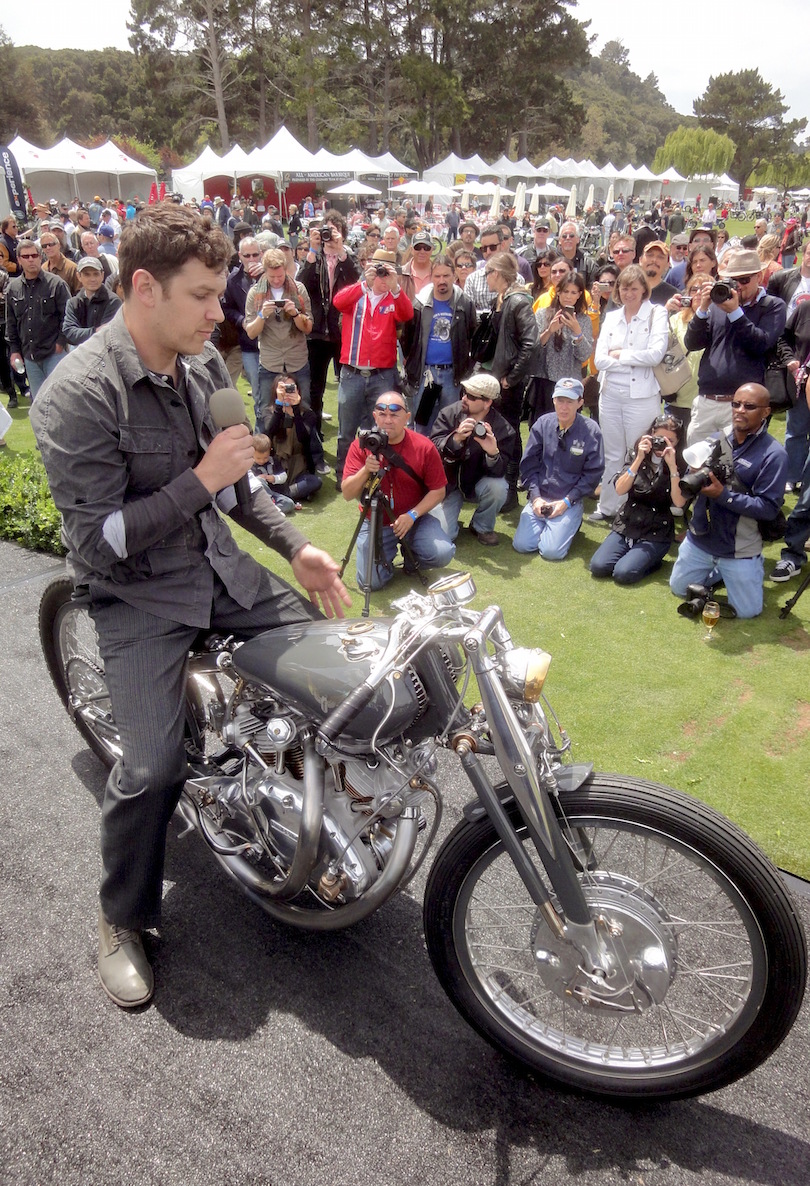
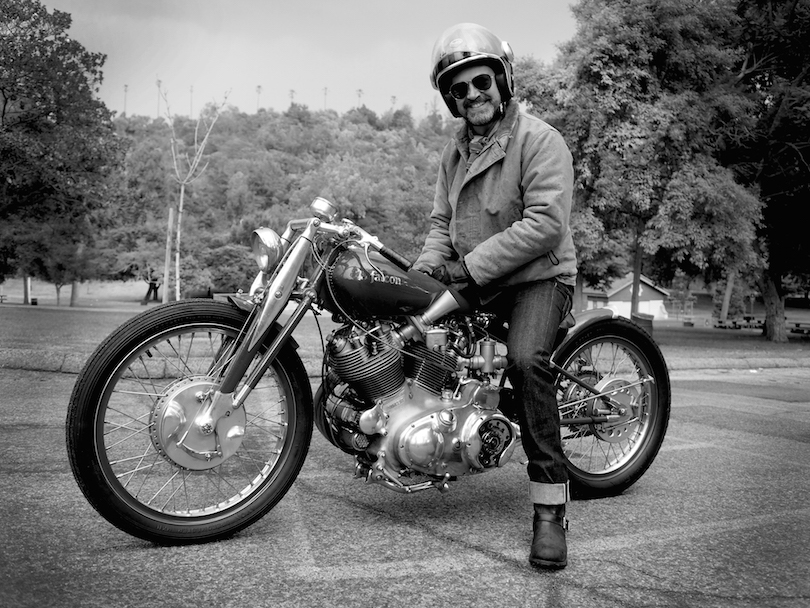
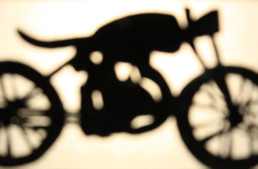
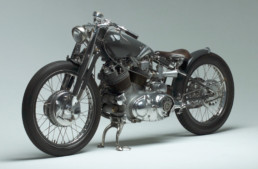
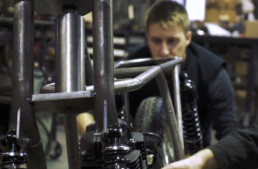
Wow is all I can say. The detail and fabrication on that seat, swingarm and rear suspension. Love it. Looks like the Quail show is on our list of shows to attend.
The Black will be featured at the upcoming Petersen Museum show ‘Custom Revolution’ from April 14, 2018, to Mar 30, 2019. See it in person!
Thank you for the content it was very helpful, got to learn a lot of things from it.